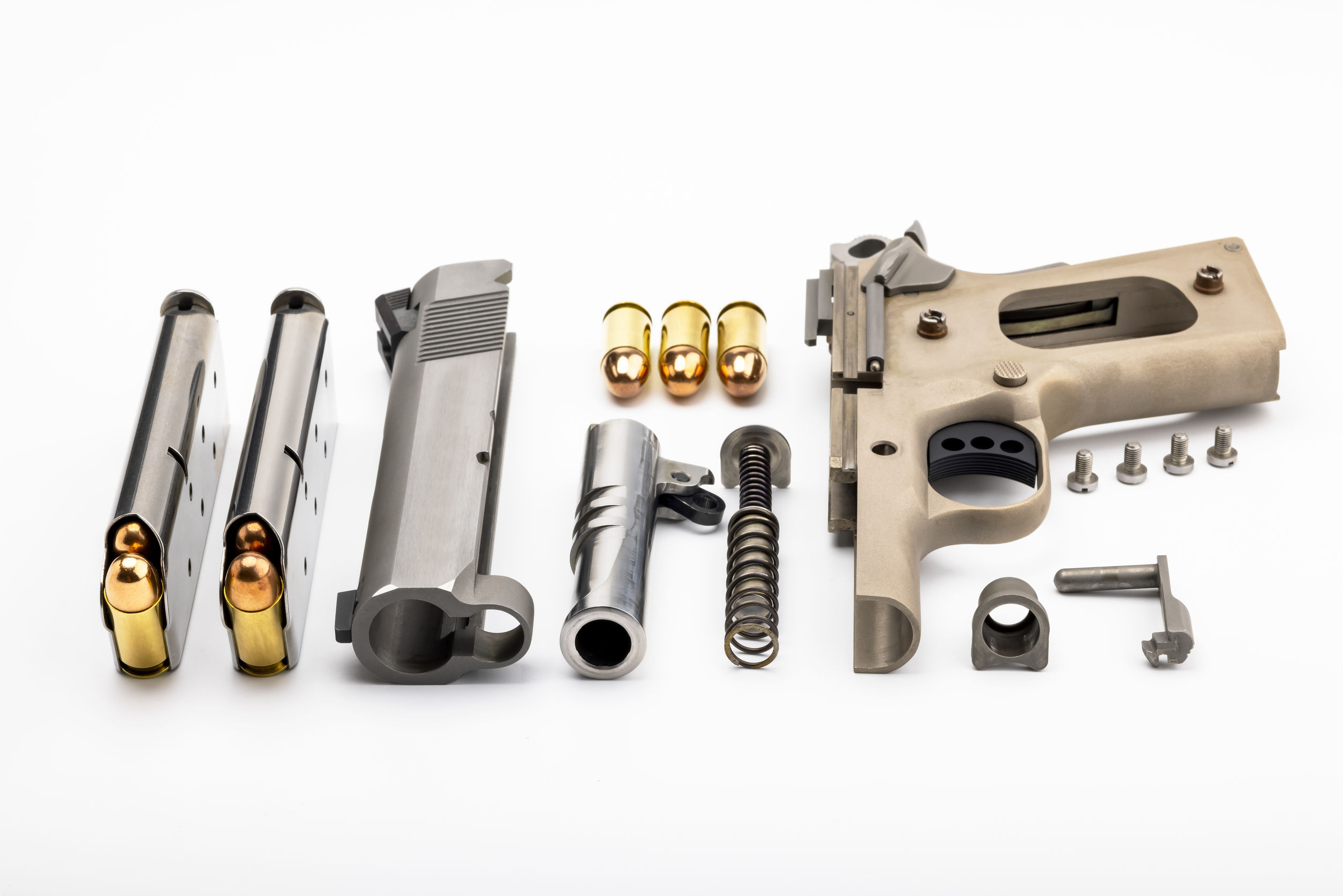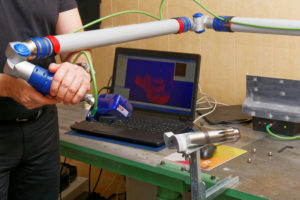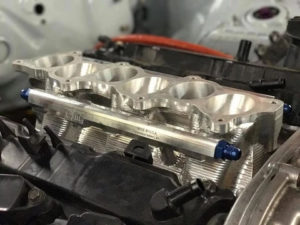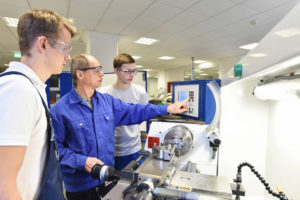While today’s handguns have four basic components (action, frame, cylinder, and barrel), they can have many smaller, more detailed pieces that aren’t immediately evident. Manufacturing well-built and trustworthy guns require attention to the detail and design of each part.
There are a few different ways that gun parts can be manufactured. The most popular methods include casting, injection molding, or machining.
Guns have to hold up against immense pressure and power. However, the casting process can leave gun parts too weak to stand against this level of wear and tear. They can leave metal parts with microscopic pores and air bubbles that can threaten the gun’s integrity.
Injection molding, while cost-effective, is less accurate. And for high-end products, injection-molded pieces can’t hold up to the required standards.
At RJM, we prefer CNC (computer numerical control) machining.
How CNC Machining Works
A CNC machining system utilizes multiple computer-assisted designs paired with state-of-the-art cutting materials to create gun parts that are the perfect shape, size, and fit every time.
Because the process is entirely automated, CNC machining cuts out any degree of human error. During the cutting process, clamps hold a piece of unshaped material in place while a milling tool drills into the material to remove excess. The process is similar to the way that sculptures are created from a block of marble.
This precise method can be repeated over and over again to create identical pieces, no matter how detailed they may need to be, at a speed unmatched by any other manufacturing method.
The accompanying software can integrate with a partner company’s CAD/CAM design files, enabling the computer to create precise gun parts down to their exact specifications.
No matter the part you need, RJ Manufacturing has the technology and peace of mind you need to know that your gun parts are being created with strength and longevity in mind.




